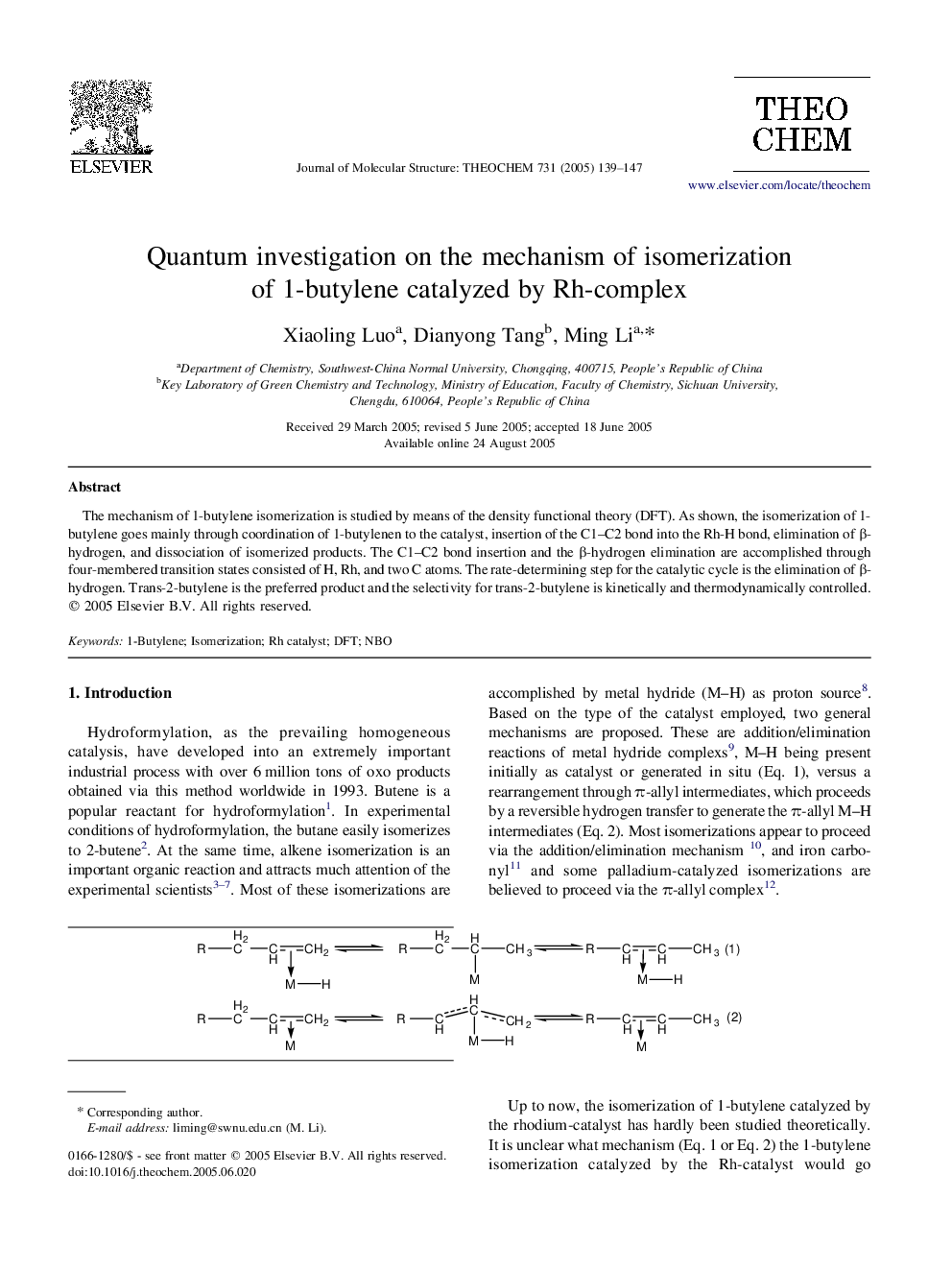| Article ID | Journal | Published Year | Pages | File Type |
|---|---|---|---|---|
| 9590564 | Journal of Molecular Structure: THEOCHEM | 2005 | 9 Pages |
Abstract
The mechanism of 1-butylene isomerization is studied by means of the density functional theory (DFT). As shown, the isomerization of 1-butylene goes mainly through coordination of 1-butylenen to the catalyst, insertion of the C1-C2 bond into the Rh-H bond, elimination of β-hydrogen, and dissociation of isomerized products. The C1-C2 bond insertion and the β-hydrogen elimination are accomplished through four-membered transition states consisted of H, Rh, and two C atoms. The rate-determining step for the catalytic cycle is the elimination of β-hydrogen. Trans-2-butylene is the preferred product and the selectivity for trans-2-butylene is kinetically and thermodynamically controlled.
Keywords
Related Topics
Physical Sciences and Engineering
Chemistry
Physical and Theoretical Chemistry
Authors
Xiaoling Luo, Dianyong Tang, Ming Li,
